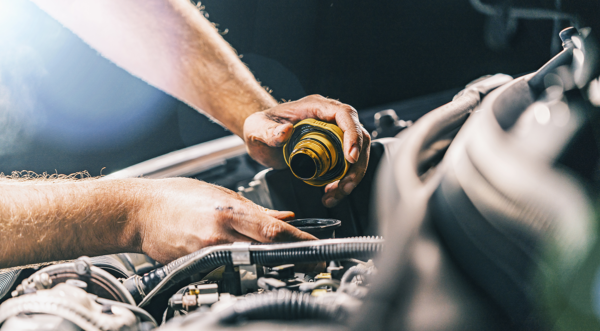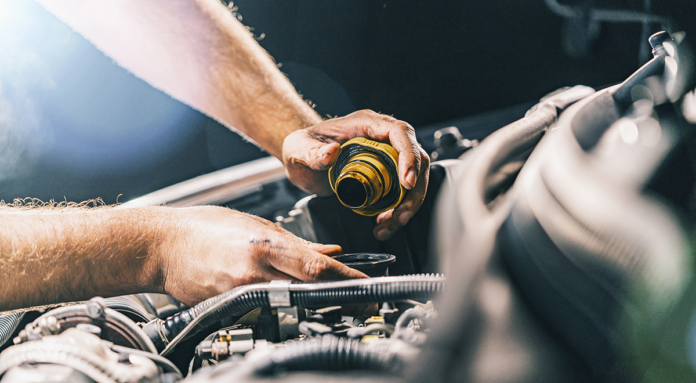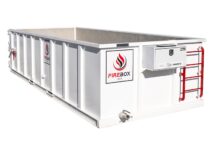 There are a variety of ways tow companies can reduce fleet total cost of ownership (TCO). It typically starts with truck selection and what companies should look for to maximize uptime and prolong lifespan. In addition to considering the initial cost of the unit, the warranty for the unit should be evaluated. Manufacturers who back their equipment with a warranty typically have more confidence in their performance.
There are a variety of ways tow companies can reduce fleet total cost of ownership (TCO). It typically starts with truck selection and what companies should look for to maximize uptime and prolong lifespan. In addition to considering the initial cost of the unit, the warranty for the unit should be evaluated. Manufacturers who back their equipment with a warranty typically have more confidence in their performance.
There are also questions to ask related to the manufacturing process, including:
- Look at the painting on the product. Are items fully painted before assembly or painted after assembly? Painting prior to assembly provides better coverage and components are less susceptible to corrosion.
- Look at the electrical system. Does the unit have an engineered harness with sealed connectors, sleeves, and looms to protect the harness? Are there splices in the lines?
- Look at the hydraulic system. Are steel lines used when possible? Is the unit designed to minimize rubbing and chafing? Is there paint overspray on the hoses?
Accessories to help extend service
The first accessory everyone should have is a tire gauge. Proper tire inflation is one of the easiest and cheapest ways to avoid replacing expensive tires. Two other accessories, quite seriously, are a hose and wash bucket. The cleanliness of a unit is one of the first things a customer will notice when operators roll up to a work site, which can lead to repeat business.
Removing dirt, road salt, dust, mud, and other residue off vehicles will not only reduce the opportunity for corrosion, but it will also help operators spot fluid weeping before it becomes fluid leaking. While a power washer can speed up the cleaning process, drivers should not be too aggressive and follow the manufacturer’s instructions.
Maintenance considerations
There are two kinds of maintenance: preventive, meaning catching an issue before something happens or reactive, meaning something broke at an unexpected time – costing fleet owners additional time and money.
Preventive maintenance should begin by following the manufacturer’s inspection and maintenance schedule in the factory-issued owner’s manual. Drivers should also implement daily and weekly checks for abnormal wear and tear of the equipment. These checks must extend to the rigging and other gear on the unit. Finally, fuel tanks should always be filled before they drop below a quarter tank and are running on fumes.
Maintenance kits are another important aspect of keeping units running across a fleet. Using a manufacturer’s maintenance kit at the correct intervals helps keep the unit running in top condition. Maintenance kits also reduce the amount of time spent trying to find all the components needed to perform an interval service. Kits can be purchased in advance to eliminate making a trip to the distributor for parts in the middle of a service.
Increasing employee retention
Retaining employees is another key factor in reducing TCO. According to gallup.com, the cost of replacing an individual employee can range from one-half to two times the employee’s annual salary. There are a wide range of opinions on how to help keep employees on the payroll. If rewards and incentives are given, they should be drawn from an existing budget, so it doesn’t impact a company’s bottom line.
While financial rewards are helpful, owners should do their best to focus on the drivers themselves. Employees who feel a level of ownership are typically happier and more involved in the company as a whole. Take the time to work one-on-one with employees to understand their concerns and to help solve any issues with their equipment or other aspects of their work.
Employee training is also a critical part of retention. It starts with how to properly operate the unit to avoid causing premature wear and tear. Keep in mind, while the next generation of drivers may be more tech savvy, it does not automatically mean they don’t have the aptitude for mechanical work. Take time to teach them why and how things work and be willing to share what you have learned during your tenure. If you have younger operators on your team, find mentors to show them how and why things work.
Geographic location and TCO
Geography and climate can take a toll on any vehicle. Mountainous areas will cause more wear on brakes and tires. Wintery climates can breed corrosion if the unit is not cleaned routinely. Dry and arid conditions kick up dust, which is abrasive on moving parts. Basically, anything that can collect on a unit in adverse conditions can cause corrosion or wear damage. Be mindful of the impact this damage has to the bottom line.
Vehicle Maintenance Reporting Standards

Fleet owners can also track TCO through Vehicle Maintenance Reporting Standards (VMRS). This includes repair orders, trip reports, fuel transaction reports, etc. Originally developed for the over-the-road trucking industry, VMRS has continued to expand over the years and is now the standard shorthand coding system for describing and tracking maintenance, from the equipment level to individual components.
VMRS creates a communication system between the driver, maintenance team and operations staff that is concise and easy to interpret if the truck is fully functional and, if not, what exactly needs to be repaired. Many companies prefer to perform some work themselves but will also use OEM dealer service facilities when needed. When the operators and OEM service teams speak the same language, it can be easier to understand the potential underlying issues with the truck.
Electronic Logging Devices
Electronic Logging Devices (ELDs) can be a start to capturing basic vehicle operating information, but the core requirement of the typical ELD system is to confirm that drivers are meeting the hours of service (HOS) regulations. These are typically limited to date, time, location, engine hours, vehicle miles and operator information. To comply with Federal Motor Carrier Safety Administration (FMCSA) requirements, companies are only required to maintain six months of records of duty status (RODS), so they would need to transfer this information to the maintenance system for longer record retention.
Lowering fuel costs
Electrification and alternative fuels are both options with potential to help lower TCO. With electrification still in its infancy, compressed natural gas (CNG) appears to be a promising nearer-term fuel alternative as the infrastructure continues to grow beyond municipalities. As a body manufacturer, Jerr-Dan continues to evaluate opportunities to reduce weight, which can improve payload and fuel performance.
Telematics and TCO
In terms of new technologies to reduce TCO, telematics is becoming more and more commonplace. As we learn how to make our fleets smarter, we will be able to do a better job capturing data on equipment utilization and handling. Electrification will also be a business driver but will likely be another three to five years before it makes a meaningful impact within the tow industry.
As trucks continue to become smarter and the use of telematics is more widespread, data created by these systems will help improve the accuracy of issue detection in the truck. This improvement will likely shift the scope of VMRS codes to allow a higher level of predictability, even for the small fleet operator. Understanding and proactively implementing these technology platforms will contribute to greater operational efficiency and reduced cost.
By following these guidelines, tow companies can best protect their drivers and help ensure that their equipment operates in top form, 24 hours a day. And, as a result, can reduce their overall TCO and extend equipment life and return on investment.
For more information, visit www.jerrdan.com









